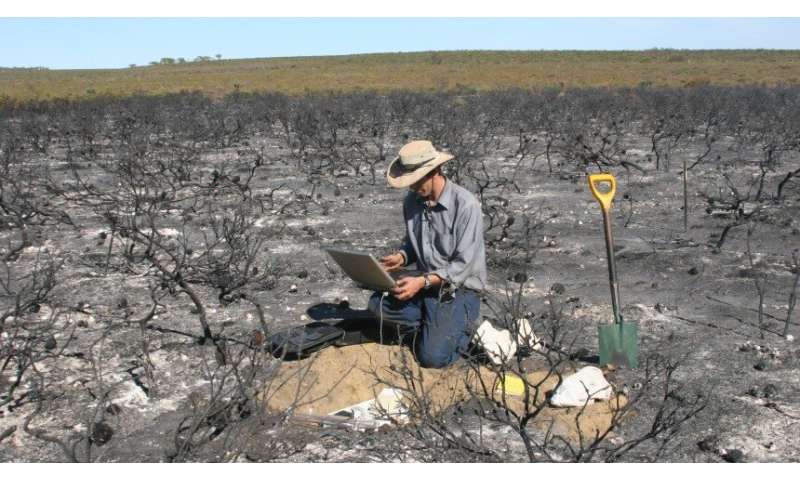How we're preparing for our fiery future
by Science X staff
New research is informing how, when and where prescribed burns may be used to mitigate bushfire threats while maintaining our biodiversity.
The reverberations of Australia's recent epic bushfire season will be felt for generations. The Eastern State's drought is as bad as the Federation drought, but it is hotter, which means both elevated bushfire risk and unstoppable fires.
"The bushfire crisis has drawn a big thick line underneath some gaping holes in our knowledge," says Dr. Joe Fontaine, who is leading research to contribute to more effective fire management practices.
"We urgently need to understand how climate change and fire interact to drive changes in ecosystems—this may be individual species, ecosystems, or destabilizing carbon storage."
Dr. Fontaine is looking at the role of prescribed burns to inform better decision making by local and state governments.
"Our research is exploring the consequences of intentional, prescribed burns on our biodiverse vegetation in WA. We're considering when, where, and how often fire should be used to reduce hazard and what the biodiversity trade-offs are under a drying and warming climate."
Dr. Fontaine's research has focussed on banksia woodlands, which are considered fire-prone and have high biodiversity value due to the range of plant species and animals that live within them.
He is partnering with the Department of Biodiversity, Conservation and Attractions to select parts of banksia woodlands, measure their biodiversity, burn them and remeasure them.
Those burns provide insights on what happens to the vegetation and what happens to the fuel loads. Based on that, the team aims to provide recommendations on how varying the frequency of prescribed burns relates to biodiversity and fuel hazard reduction.
"How long do they need between fires to do that? If its warmer and dryer, that's going to slow them down. At what point does it mean you can't have a forest because trees take longer to grow and fires are too regular? How long before forests turn into shrublands? This research is trying to understand that."
The principles of Dr. Fontaine's research can be applied almost anywhere, with particularly strong applications in areas with similar climates, from the eastern states of Australia to Germany, Spain and California.
"What we bring from this corner of the world is our fire is more frequent than other areas, allowing us to research across multiple fire cycles. So, the learnings we can get from here and export to the world have massive implications."
Provided by Murdoch University